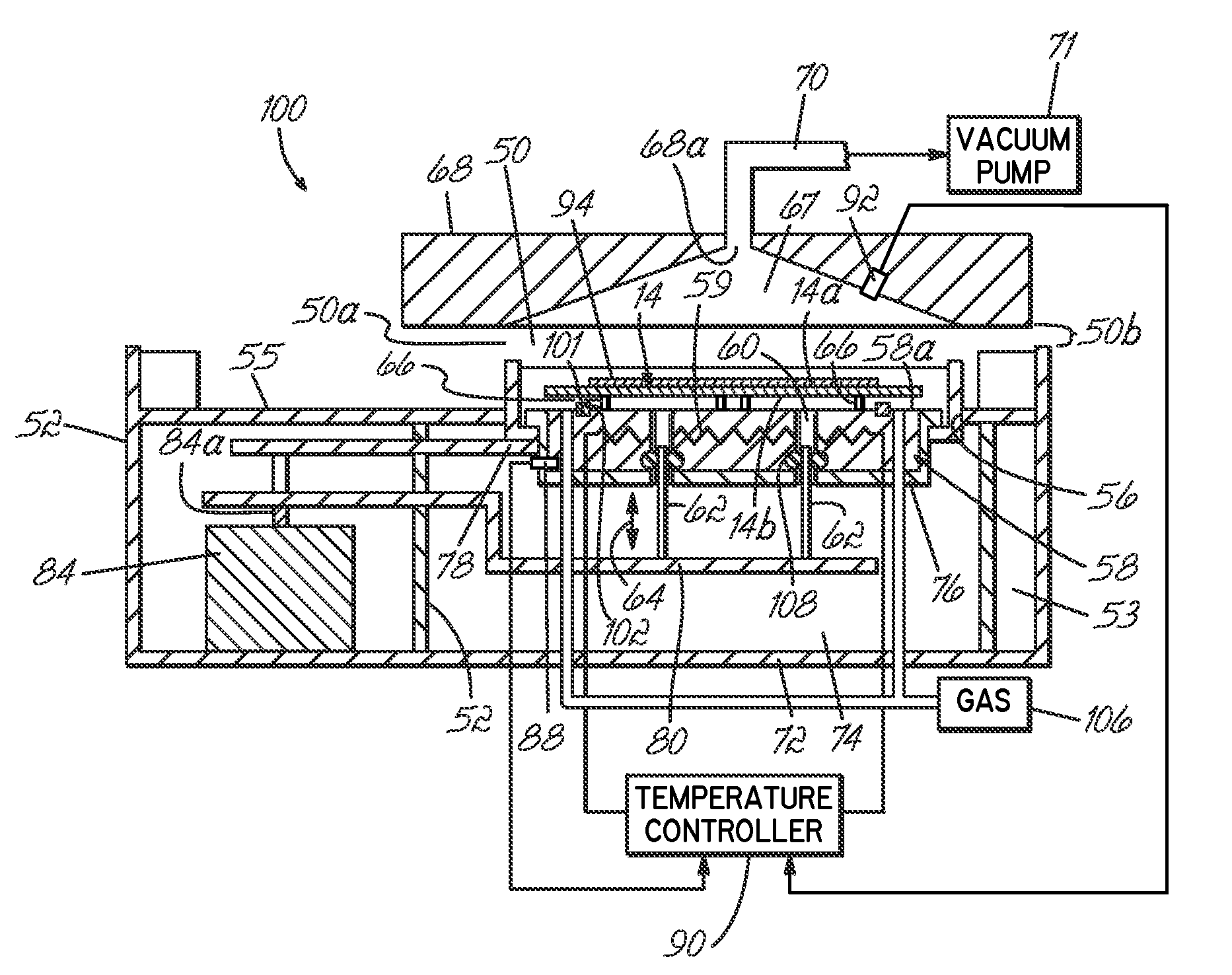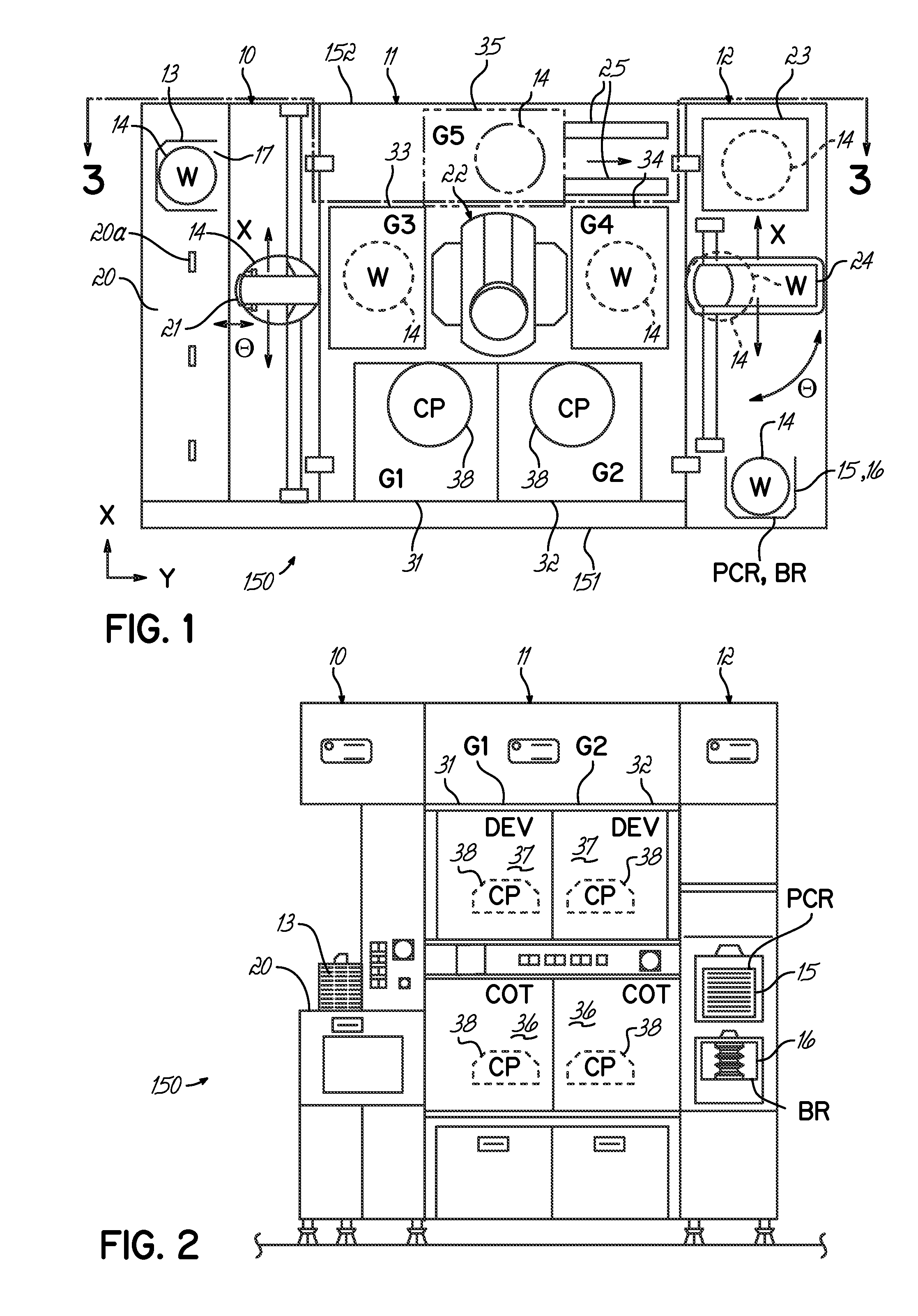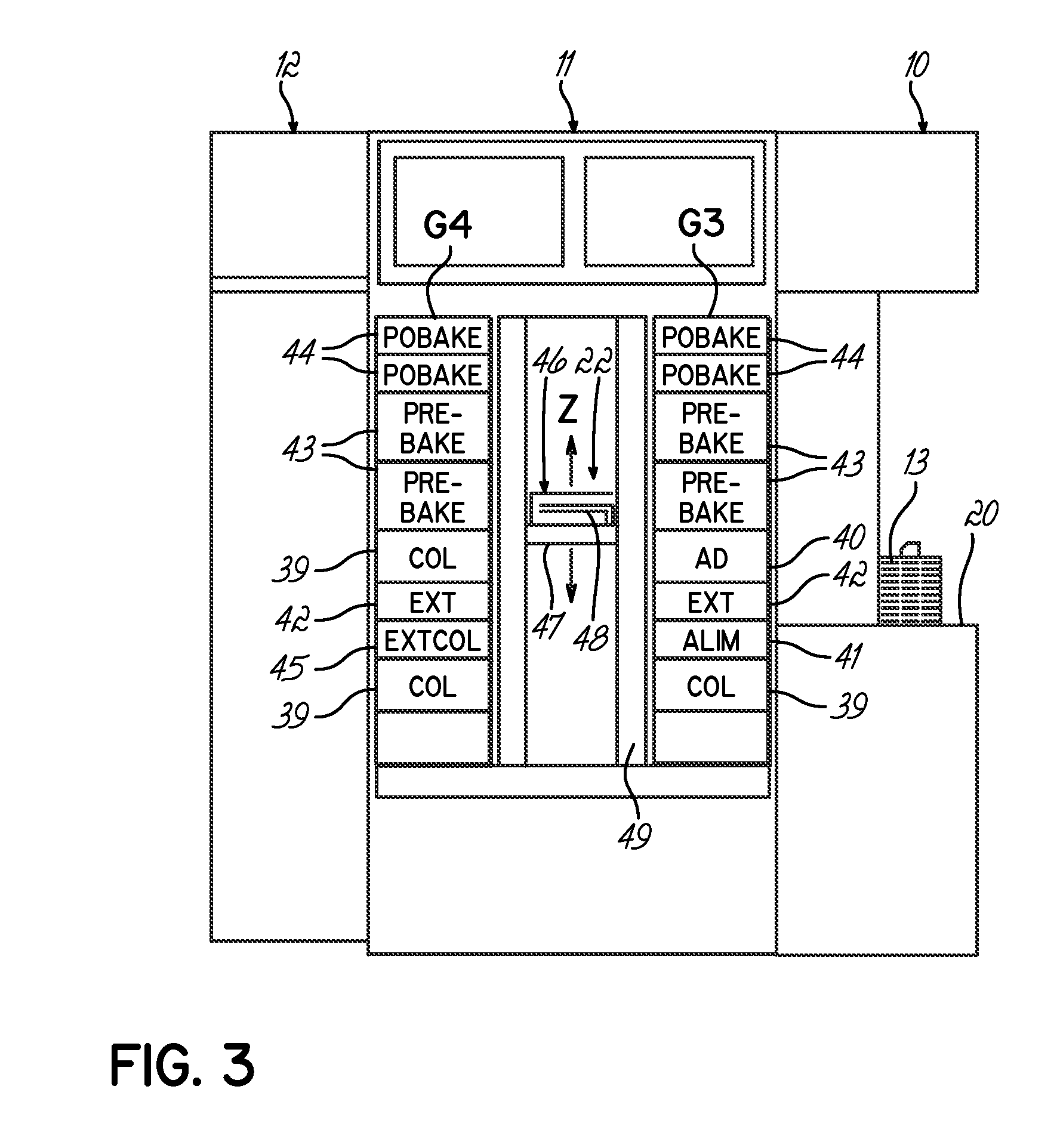Methods and heat treatment apparatus for uniformly heating a substrate during a bake process
a heat treatment apparatus and bake process technology, applied in the direction of electric heating for furnaces, furnace types, furnaces, etc., can solve the problems of difficult instantaneous determination of the temperature of the hotplate using a single temperature sensor, complicating the control of the resist feature dimensions, and unable to obtain the desired resist coating, etc., to achieve the effect of increasing the thermal conductivity
- Summary
- Abstract
- Description
- Claims
- Application Information
AI Technical Summary
Benefits of technology
Problems solved by technology
Method used
Image
Examples
Embodiment Construction
[0023]An embodiment of the method for thermally processing substrates utilizes the coating / developing process system 150. The substrate, generally in the form of a wafer composed of semiconducting material, is processed by the system 150. The processing is accomplished in such a way that the finished product will carry device structures on the top surface of the substrate.
[0024]With reference to FIGS. 1-3, the coating / developing process system 150 comprises a cassette station 10, a process station 11, and an interface section 12, which are contiguously formed as one unit. In the cassette station 10, a cassette (CR) 13 storing a plurality of substrates represented by wafers (W) 14 (e.g., 25 wafers) is loaded into, and unloaded from, the system 150. Each of the wafers 14 can be composed of a semiconductor material such as silicon, which may have the form of a single crystal material of the kind used in the art of semiconductor device manufacturing.
[0025]The process station 11 includes...
PUM
| Property | Measurement | Unit |
|---|---|---|
| temperature | aaaaa | aaaaa |
| sizes | aaaaa | aaaaa |
| temperature | aaaaa | aaaaa |
Abstract
Description
Claims
Application Information
 Login to View More
Login to View More - R&D
- Intellectual Property
- Life Sciences
- Materials
- Tech Scout
- Unparalleled Data Quality
- Higher Quality Content
- 60% Fewer Hallucinations
Browse by: Latest US Patents, China's latest patents, Technical Efficacy Thesaurus, Application Domain, Technology Topic, Popular Technical Reports.
© 2025 PatSnap. All rights reserved.Legal|Privacy policy|Modern Slavery Act Transparency Statement|Sitemap|About US| Contact US: help@patsnap.com



